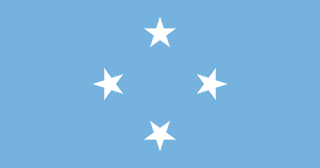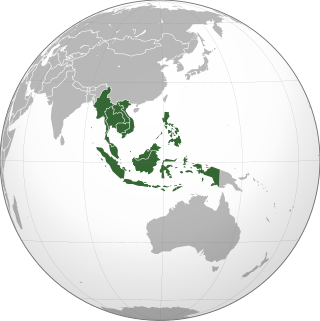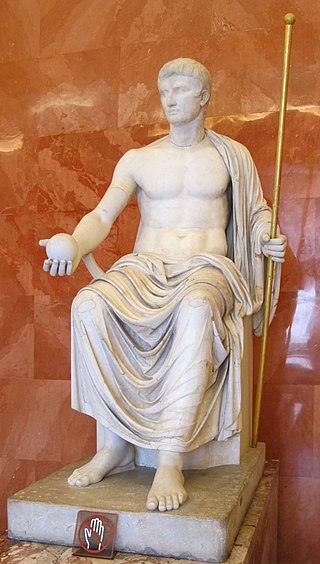| Religion by country |
|---|
| |
| This article is part of a series on |
| Oceanian Culture |
|---|
 |
| Society |
| Arts and literature |
| Other |
| Symbols |
| Oceania Portal |
Christianity is the dominant religion in Oceania .
| Religion by country |
|---|
| |
| This article is part of a series on |
| Oceanian Culture |
|---|
 |
| Society |
| Arts and literature |
| Other |
| Symbols |
| Oceania Portal |
Christianity is the dominant religion in Oceania .
| | This section needs expansion. You can help by adding to it. (June 2024) |
Prior to contact with Europeans, the different groups of the Pacific lived in systems of theocracy which generally utilised the widespread concept of tabu. [1] Various Christian missionary organisations arrived in Japan (1549), the Philippines (16th century) and the Aleutians (18th century), but European and American missions converted most of the islands of Oceania to Christianity in the course of the 19th century. [2]
| Country | Population | Christian | Muslim | Irreligion | Hindu | Buddhist | Folk religion | Other religion | Jewish | ||||||||
|---|---|---|---|---|---|---|---|---|---|---|---|---|---|---|---|---|---|
| Pop. | % | Pop. | % | Pop. | % | Pop. | % | Pop. | % | Pop. | % | Pop. | % | Pop. | % | ||
| | 25,422,800 | 11,148,800 | 43.90 | 813,392 | 3.20 | 9,887,000 | 38.90 | 684,002 | 2.70 | 615,800 | 2.40 | 325,400 | 1.30 | 178,160 | 0.80 | 100,350 | 0.40 |
| | 4,699,755 | 1,738,638 | 37.00 | 61,455 | 1.31 | 2,278,185 | 48.47 | 123,504 | 2.63 | 52,779 | 1.12 | 19,011 | 0.40 | 153,873 | 3.27 | 5,274 | 0.11 |
| Total | 30,122,555 | 12,887,438 | 42.78% | 874,487 | 2.90% | 12,165,185 | 40.39% | 807,506 | 2.68% | 668,579 | 2.22% | 344,411 | 0.59% | 479,273 | 1.59% | 109,090 | 0.36% |
| Country | Population | Christian | Muslim | Irreligion | Hindu | Buddhist | Folk religion | Other religion | Jewish | ||||||||
|---|---|---|---|---|---|---|---|---|---|---|---|---|---|---|---|---|---|
| Pop. | % | Pop. | % | Pop. | % | Pop. | % | Pop. | % | Pop. | % | Pop. | % | Pop. | % | ||
| | 860,820 | 553,840 | 64.40 | 58,400 | 6.40 | 6,880 | 0.80 | 239,941 | 27.90 | 0 | 0.00 | 0 | 0.00 | 4,300 | 0.50 | 0 | 0.00 |
| | 250,000 | 213,000 | 85.20 | 7,000 | 2.80 | 26,000 | 10.40 | 0 | 0.00 | 1,500 | 0.60 | 500 | 0.20 | 2,000 | 0.80 | 0 | 0.00 |
| | 6,860,000 | 6,805,120 | 99.20 | 2,020 | 0.003 | 0 | 0.00 | 0 | 0.00 | 0 | 0.00 | 27,440 | 0.40 | 13,720 | 0.20 | 0 | 0.00 |
| | 540,000 | 525,960 | 97.40 | 200 | 0.10 | 1,080 | 0.20 | 0 | 0.00 | 1,620 | 0.30 | 7,020 | 1.30 | 3,780 | 0.70 | 0 | 0.00 |
| | 240,000 | 223,920 | 93.30 | 1,000 | 0.10 | 2,880 | 1.20 | 0 | 0.00 | 0 | 0.00 | 9,840 | 4.10 | 3,360 | 1.40 | 0 | 0.00 |
| Total | 8,750,000 | 8,321,840 | 95.11% | 61,180 | 0.70% | 36,840 | 0.42% | 239,940 | 2.74% | 3,120 | 0.04% | 44,800 | 0.51% | 27,160 | 0.31% | 0 | 0.00% |
| Country | Population | Christian | Muslim | Irreligion | Hindu | Buddhist | Folk religion | Other religion | Jewish | ||||||||
|---|---|---|---|---|---|---|---|---|---|---|---|---|---|---|---|---|---|
| Pop. | % | Pop. | % | Pop. | % | Pop. | % | Pop. | % | Pop. | % | Pop. | % | Pop. | % | ||
| | 180,000 | 169,560 | 94.20 | 300 | 0.10 | 3,060 | 1.60 | 0 | 0.00 | 1,980 | 1.10 | 2,700 | 1.50 | 2,880 | 1.60 | 0 | 0.00 |
| | 101,120 | 97,000 | 97.00 | 500 | 0.20 | 800 | 0.80 | 0 | 0.00 | 0 | 0.00 | 0 | 0.00 | 2,200 | 2.00 | 0 | 0.00 |
| | 50,000 | 48,750 | 97.50 | 180 | 0.20 | 750 | 1.50 | 0 | 0.00 | 0 | 0.00 | 100 | 0.10 | 400 | 0.80 | 0 | 0.00 |
| | 110,000 | 104,830 | 95.20 | 208 | 0.10 | 990 | 1.00 | 0 | 0.00 | 440 | 0.40 | 2,975 | 2.60 | 770 | 0.70 | 0 | 0.00 |
| | 10,000 | 7,900 | 79.00 | 20 | 0.01 | 450 | 4.50 | 0 | 0.00 | 110 | 1.10 | 810 | 8.10 | 740 | 7.40 | 0 | 0.00 |
| | 60,000 | 48,780 | 81.30 | 420 | 0.70 | 600 | 1.00 | 0 | 0.00 | 6,360 | 10.60 | 3,180 | 5.30 | 660 | 1.10 | 0 | 0.00 |
| | 20,000 | 17,340 | 86.80 | 240 | 0.10 | 240 | 1.20 | 0 | 0.00 | 160 | 0.80 | 160 | 0.80 | 2,080 | 10.20 | 0 | 0.00 |
| Total | 530,000 | 494,160 | 93.24% | 420 | 0.08% | 6,890 | 1.30% | 0 | 0.00% | 9,050 | 1.71% | 9,970 | 1.88% | 9,730 | 1.84% | 0 | 0.00% |
| Country | Population | Christian | Muslim | Irreligion | Hindu | Buddhist | Folk religion | Other religion | Jewish | ||||||||
|---|---|---|---|---|---|---|---|---|---|---|---|---|---|---|---|---|---|
| Pop. | % | Pop. | % | Pop. | % | Pop. | % | Pop. | % | Pop. | % | Pop. | % | Pop. | % | ||
| | 70,920 | 68,860 | 98.30 | 50 | 0.10 | 490 | 0.70 | 0 | 0.00 | 210 | 0.30 | 280 | 0.40 | 210 | 0.30 | 0 | 0.00 |
| | 20,000 | 19,200 | 96.00 | 0 | 0.00 | 640 | 3.20 | 0 | 0.00 | 0 | 0.00 | 0 | 0.00 | 160 | 0.80 | 0 | 0.00 |
| | 270,000 | 253,800 | 94.00 | 688 | 0.10 | 13,230 | 4.80 | 0 | 0.00 | 0 | 0.00 | 1,350 | 0.50 | 1,080 | 0.40 | 0 | 0.00 |
| | 2,000 | 1,928 | 96.40 | 50 | 0.10 | 66 | 3.20 | 0 | 0.00 | 0 | 0.00 | 0 | 0.00 | 4 | 0.20 | 0 | 0.00 |
| | 180,000 | 174,240 | 96.80 | 300 | 0.10 | 4,500 | 2.50 | 0 | 0.00 | 0 | 0.00 | 0 | 0.00 | 720 | 0.30 | 0 | 0.00 |
| | 1,414 | 1,397 | 99.80 | 0 | 0.00 | 0 | 0.00 | 0 | 0.00 | 0 | 0.00 | 0 | 0.00 | 3 | 0.20 | 0 | 0.00 |
| | 100,000 | 99,000 | 99.00 | 120 | 0.10 | 0 | 0.00 | 100 | 0.10 | 0 | 0.00 | 0 | 0.00 | 900 | 0.80 | 0 | 0.00 |
| | 11,000 | 10,800 | 99.80 | 200 | 0.20 | 0 | 0.00 | 0 | 0.00 | 0 | 0.00 | 0 | 0.00 | 0 | 0.00 | 0 | 0.00 |
| | 13,000 | 12,662 | 97.40 | 0 | 0.00 | 78 | 0.60 | 0 | 0.00 | 0 | 0.00 | 156 | 1.20 | 104 | 0.80 | 0 | 0.00 |
| Total | 667,400 | 641,574 | 96.13% | 1400 | 0.20% | 19,147 | 2.87% | 100 | 0.01% | 210 | 0.03% | 1,786 | 0.27% | 3,390 | 0.51% | 0 | 0.00% |

Asia is the largest continent in the world by both land area and population. It covers an area of more than 44 million square kilometres, about 30% of Earth's total land area and 8% of Earth's total surface area. The continent, which has long been home to the majority of the human population, was the site of many of the first civilisations. Its 4.7 billion people constitute roughly 60% of the world's population.

The Federated States of Micronesia, or simply Micronesia, is an island country in Micronesia, a subregion of Oceania. The federation consists of four states—from west to east: Yap, Chuuk, Pohnpei, and Kosrae—that span across the western Pacific just north of the equator, for a longitudinal distance of almost 2,700 km (1,700 mi). Together, the states comprise around 607 islands and a combined land area of approximately 702 km2 or 271 sq mi.

Micronesia is a subregion of Oceania, consisting of approximately 2,000 small islands in the Northwestern Pacific Ocean. It has a close shared cultural history with three other island regions: Maritime Southeast Asia to the west, Polynesia to the east, and Melanesia to the south—as well as with the wider community of Austronesian peoples.

Oceania is a geographical region including Australasia, Melanesia, Micronesia, and Polynesia. Outside of the English-speaking world, Oceania is generally considered a continent, while Mainland Australia is regarded as its continental landmass. Spanning the Eastern and Western hemispheres, at the centre of the water hemisphere, Oceania is estimated to have a land area of about 9,000,000 square kilometres (3,500,000 sq mi) and a population of around 44.4 million as of 2022. Oceania is the smallest continent in land area and the second-least populated after Antarctica.

Samoa, officially the Independent State of Samoa and known until 1997 as Western Samoa, is an island country in Polynesia, consisting of two main islands ; two smaller, inhabited islands ; and several smaller, uninhabited islands, including the Aleipata Islands. Samoa is located 64 km (40 mi) west of American Samoa, 889 km (552 mi) northeast of Tonga, 1,152 km (716 mi) northeast of Fiji, 483 km (300 mi) east of Wallis and Futuna, 1,151 km (715 mi) southeast of Tuvalu, 519 km (322 mi) south of Tokelau, 4,190 km (2,600 mi) southwest of Hawaii, and 610 km (380 mi) northwest of Niue. The capital and largest city is Apia. The Lapita people discovered and settled the Samoan Islands around 3,500 years ago. They developed a Samoan language and Samoan cultural identity.

Southeast Asia is the geographical southeastern region of Asia, consisting of the regions that are situated south of China, east of the Indian subcontinent, and northwest of the Australian mainland, which is part of Oceania. Southeast Asia is bordered to the north by East Asia, to the west by South Asia and the Bay of Bengal, to the east by Oceania and the Pacific Ocean, and to the south by Australia and the Indian Ocean. Apart from the British Indian Ocean Territory and two out of 26 atolls of the Maldives in South Asia, Maritime Southeast Asia is the only other subregion of Asia that lies partly within the Southern Hemisphere. Mainland Southeast Asia is entirely in the Northern Hemisphere. East Timor and the southern portion of Indonesia are the parts of Southeast Asia that lie south of the equator.

Theocracy is a form of autocracy or oligarchy in which one or more deities are recognized as supreme ruling authorities, giving divine guidance to human intermediaries who manage the government's daily affairs.

The Tuamotu Archipelago or the Tuamotu Islands are a French Polynesian chain of just under 80 islands and atolls in the southern Pacific Ocean. They constitute the largest chain of atolls in the world, extending over an area roughly the size of Western Europe. Their combined land area is 850 square kilometres. This archipelago's major islands are Anaa, Fakarava, Hao and Makemo.

European exploration and settlement of Oceania began in the 16th century, starting with the Spanish (Castilian) landings and shipwrecks in the Mariana Islands, east of the Philippines. This was followed by the Portuguese landing and settling temporarily in some of the Caroline Islands and Papua New Guinea. Several Spanish landings in the Caroline Islands and New Guinea came after. Subsequent rivalry between European colonial powers, trade opportunities and Christian missions drove further European exploration and eventual settlement. After the 17th century Dutch landings in New Zealand and Australia, with no settlement in these lands, the British became the dominant colonial power in the region, establishing settler colonies in what would become Australia and New Zealand, both of which now have majority European-descended populations. States including New Caledonia (Caldoche), Hawaii, French Polynesia, and Norfolk Island also have considerable European populations. Europeans remain a primary ethnic group in much of Oceania, both numerically and economically.

Religion in Papua New Guinea is dominated by various branches of Christianity, with traditional animism and ancestor worship often occurring less openly as another layer underneath or more openly side by side with Christianity. The Catholic Church has a plurality of the population. The courts, government, and general society uphold a constitutional right to freedom of speech, thought, and beliefs. A secular state, there is no state religion in the country, although the government openly partners with several Christian groups to provide services, and churches participate in local government bodies.

Māori religion encompasses the various religious beliefs and practices of the Māori, the Polynesian indigenous people of New Zealand.

Oceanic art or Oceanian art comprises the creative works made by the native people of the Pacific Islands and Australia, including areas as far apart as Hawaii and Easter Island. Specifically it comprises the works of the two groups of people who settled the area, though during two different periods. They would in time however, come to interact and together reach even more remote islands. The area is often broken down into four separate regions: Micronesia, Melanesia, Polynesia and Australia. Australia, along with interior Melanesia (Papua), are populated by descendants of the first waves of human migrations into the region by Australo-Melanesians. Micronesia, Island Melanesia, and Polynesia, on the other hand, are descendants of later Austronesian voyagers who intermixed with native Australo-Melanesians; mostly via the Neolithic Lapita culture. All of the regions in later times would be greatly affected by western influence and colonization. In more recent times, the people of Oceania have found a greater appreciation of their region's artistic heritage.
A confessional state is a state which officially recognises and practices a particular religion, usually accompanied by a public cult, and at least encourages its citizens to do likewise.

According to the most recent census in 2007, most people have a Christian background, with a sizable Hindu (27.9%) and Muslim (6.3%) minority. Religion tends to split along ethnic lines with most Indigenous Fijians being Christian and most Indo-Fijians being mostly Hindu or in some cases, Muslim.

Christianity is the largest religion in Vanuatu. Vanuatu is an archipelago made up of 13 larger islands, and approximately 70 smaller surrounding islands, each home to multitudes of diverse cultural and religious communities.

Christianity is the official and largest religion in Samoa, with its various denominations accounting for around 98% of the total population. The article 1 of the Constitution of Samoa states that "Samoa is a Christian nation founded of God the Father, the Son and the Holy Spirit".

This article presents an overview of the culture of Vanuatu.
Characteristic of Christianity in the 19th century were evangelical revivals in some largely Protestant countries and later the effects of modern biblical scholarship on the churches. Liberal or modernist theology was one consequence of this. In Europe, the Roman Catholic Church strongly opposed liberalism and culture wars launched in Germany, Italy, Belgium and France. It strongly emphasized personal piety. In Europe there was a general move away from religious observance and belief in Christian teachings and a move towards secularism. In Protestantism, pietistic revivals were common.
Christianity and colonialism are associated with each other by some due to the service of Christianity, in its various sects, as the state religion of the historical European colonial powers, in which Christians likewise made up the majority. Through a variety of methods, Christian missionaries acted as the "religious arms" of the imperialist powers of Europe. According to Edward E. Andrews, Associate Professor of Providence College Christian missionaries were initially portrayed as "visible saints, exemplars of ideal piety in a sea of persistent savagery". However, by the time the colonial era drew to a close in the later half of the 20th century, missionaries were viewed as "ideological shock troops for colonial invasion whose zealotry blinded them", colonialism's "agent, scribe and moral alibi".
Though it is no longer practised today, Tonga's ancient religion was practised for over 2,000 years, and some authors have characterised pre-contact Tonga as a theocracy. Christian missionaries arrived from the 1790s; they persuaded King George Tupou I to convert (1831) to Christianity. He ordered and strictly enforced that all Tongans become Christian and no longer practise the ancient polytheistic religion with its supreme god Tangaloa.
[...] king, chiefs, priests, and the gods themselves, formed one undivided theocracy, whereof tabu constituted he chief instrument, at once spiritual and temporal in its nature and effects. [...] Primary connexion of Oceanic tabu with a theocratic system [...] Secondary developments of tabu in Oceania [...] whereas the essence ot tabu in its local signification consists [...] in a theocratic form of government, which in its turn may have developed by way of an apotheosis of landlordism, the ramifications of the notion are endless and cover the whole religion of Oceania [...]. The theocracy could consecrate a site, or devote a victim, or appropriate a house or canoe, or betroth a woman, or proclaim a rest-day for men or a close-time for game [...].